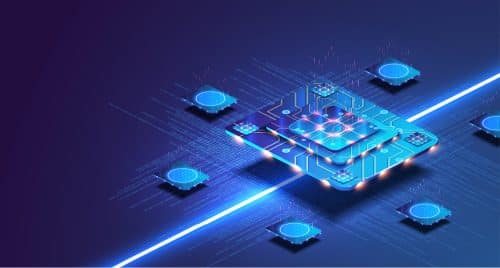The changes in the world each day are unlike anything humanity has ever encountered before in terms of size, breadth, and intricacy. With the revolution of Industry 4.0, how can quantum technologies find themselves to be a part of it? Chiranjeevi Aradhya, Senior Software Engineer at Collins Aerospace, Cedar Rapids, Iowa tells us how quantum technologies can be used.

Quantum theory states that all energy and matter is made up of particles known as quanta. The long-term aim of quantum information technology research is to develop control and manipulation methods of quantum systems to extend information processing beyond the capabilities of the classical world. The usage of quantum concepts in engineering to solve difficult technicalities in computers, communications, sensing, chemistry, encryption, imaging, and mechanical issues will be quite common in the future. For example, the quantum computer can do things that even the most sophisticated supercomputers cannot.
Quantum and classical computers differ in three primary ways. First, quantum computing does not use bits that are either zero or one; it uses qubits that have the ability to act as either a zero or a one at the same time. Second, qubits reside in an entangled state rather than being separate entities. We can say, these two characteristics provide qubits the capacity to store exponentially more information than traditional computers. The third distinction is that a quantum computer operates in a fundamentally different manner. It analyses all possible outcomes simultaneously and utilises constructive interference to decide on a probable solution that is just right.
As research and development (R&D) in this area progresses, this technology will soon affect everything we do in our daily lives, from communicating to conducting our finances. Quantum computing, with all its advantages, is attractive to different areas of technology including autonomous vehicles, weather forecasting, transit planning, pharmaceutical research, secure financial communications, resource exploitation, and sensing. For an air carrier, it could assist with delays, rerouting, and rescheduling of flights that have been cancelled, adding to all this greater security while paying bills online. This advancement even allows more specific medical imaging systems to be created.
The materials used in nanoscale quantum computers have unique characteristics that could increase the sophistication of model chemical processes and material design. This would help designers and engineers develop better drugs, batteries, and advanced materials with superior electrical and mechanical properties.
Even with such huge advantages possible, the quantum field is not yet ready for commercialisation due to significant scientific and technological difficulties involved. Innovative and high-impact applications might be developed by companies based on substantial and dependable government backing, which could lead to economic development and employment. These economic outcomes would act as feedback for a developing quantum economy.
Fundamental research, translation, technological development, and solving problems related to national objectives must be included in our initiatives. This inclusion may involve quantum computers, quantum communication, indigenous capacity, and trained personnel needed for quantum-based research.
Industrial revolution 4.0
We only have a basic understanding of development, but a well-rounded approach must be used, with all of the global stakeholders’ participation involving not only the public and commercial sectors but also academia and civil society. Let us look at how the industries have evolved through the revolution.
Water and steam power helped propel the first industrial revolution, which included automation. The second revolutionised mass manufacturing with the use of electricity. The third revolution used electronics and information technology in the manufacturing process. The fourth industrial revolution is in the process of being built with the third industrial revolution as its foundation. It began in late 20th century with the digital revolution. Convergence is helping the emerging technologies move seamlessly across the physical, digital, and biological worlds.
There are three key factors that differentiate the current transition era from previous ones: pace, scope, and system effect. Historical precedent can no longer be applied to the present pace of breakthroughs. While earlier industrial revolutions took place at a linear speed, the fourth industrial revolution is progressing at an exponential rate. Further, it is interrupting almost every sector and nation across the world, causing drastic changes from our methods of manufacturing, our management, to our whole system of governance.
We believe that mobile devices—with all their processing power, storage capacity, and access to information—will open the doors to a variety of applications for billions of people.
In addition, advancements in areas such as artificial intelligence, robots, the Internet of Things, autonomous cars, 3D printing, nanotechnology, biotechnology, materials science, energy storage, and quantum computing will have a positive impact on the potential solutions.









